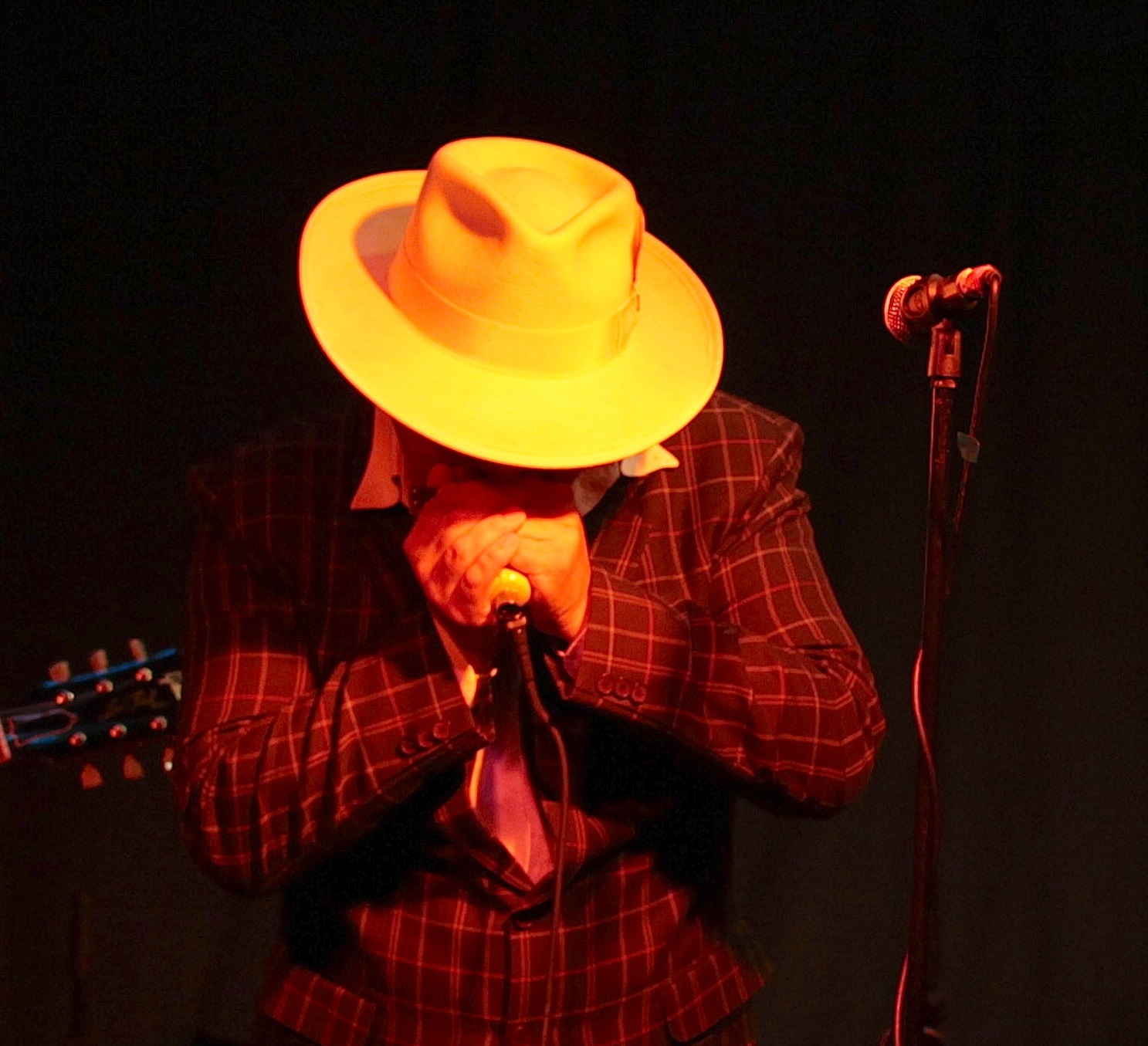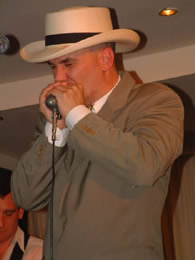Why Are Draw 2 And Blow 3 The Same?
Every truly cultured music student knows
Find your 10 hole C diatonic harmonica and blow hole 3. You’re playing G natural. Now draw hole 2. You’re also playing G natural. So why do we have duplicated notes on our instrument?
Well before we get all technical, for beginners it’s a great way to check that your 2 draw is true and not partially bent when you’re playing. When starting out, 2 draw can be hard to master. It can help to blow 3 and see if you are in pitch by comparing it with your 2 draw. If you’re experiencing problems, check out this helpful post ‘Why is 2 draw so difficult?‘. Now back to our two note conundrum. No it’s not a mistake, and yes, it does seem strange.
To solve the apparent mystery, let’s first consider blow 3. Our blow notes are arranged uniformly in terms of pitch. If we blow them in sequence from hole 1 to 4, we’ll hear the C major arpeggio. The same goes for holes 4 to 7, and 7 to 10 respectively. It’s the same result in three different octaves, each one higher in pitch than the previous, rather like a piano keyboard.
You must learn your scales and your arpeggios
If you’re wondering what arpeggio means, it’s pretty simple. We could blow holes 1-4 simultaneously to create a C major chord. The same goes for holes 4-7, and 7-10. Alternatively, we could break the chord into it’s components by blowing the notes one at a time. Hence the alternative name for arpeggio, which is a broken chord. When we also learn that arpeggio is Italian for a harp (as in the classical orchestral stringed instrument), we can appreciate that we are mimicking the plucking of individual strings, rather than delivering them collectively.
Which is all very well in theory, but what does it actually sound like? If you haven’t already done so, try it yourself. Blow holes 1-2-3-4-3-2-1 in sequence and ensure you hit each note cleanly. It sounds a bit like an opera singer warming up. That’s arpeggio.
Bring the music ringing from your chest and not your nose
Time to dig a little deeper, but you’ll find this pretty easy. The principle notes of the C major chord and arpeggio are C E G C, with blow 3 providing the G. Without this note the chord would sound incomplete. We also know that this system is laid out uniformly across all our blow holes. Which is why your harmonica teacher will say you can play any of your blow notes across a supporting C chord and they’ll sit perfectly.
 So now let’s consider draw 2, which also provides a G. Play draw holes 1 to 4 in sequence up and down. The result is not exactly an arpeggio, but it’s not far off. What we have are the principle notes of the G major chord G, B and D in holes 2, 3 and 4 draw, plus an extra D in hole 1 draw (arguably making the arrangement an inverted G major chord, but let’s hold this thought for another day). What’s important is that, as we continue along the harmonica, it becomes quite clear that our draw notes are not pitched uniformly; unlike our blow notes.
So now let’s consider draw 2, which also provides a G. Play draw holes 1 to 4 in sequence up and down. The result is not exactly an arpeggio, but it’s not far off. What we have are the principle notes of the G major chord G, B and D in holes 2, 3 and 4 draw, plus an extra D in hole 1 draw (arguably making the arrangement an inverted G major chord, but let’s hold this thought for another day). What’s important is that, as we continue along the harmonica, it becomes quite clear that our draw notes are not pitched uniformly; unlike our blow notes.
Don’t stress. This is deliberate and it’s actually helpful. Let’s rationalise what we have. If we consider draw holes 1 to 4 as our supporting G chord or arpeggio, this seems a reasonable arrangement. If we were pianists, these would be notes for our left hand. If we then consider holes 4 to 7 as something separate, we have components of our central major scale or do re mi melody notes (4B 4D 5B 5D 6B 6D 7D 7B) this also seems reasonable. If we were pianists, these would be notes for our right hand. Draw holes 8 to 10 are then an extension of our right hand do re mi melody note range (7B 8D 8B 9D 9B 10D 10B” 10B).
While you play your scales and your arpeggios
So what have we actually established? Put simply, that G natural is a critical component of both the C major chord (our blow notes) and, of course, the G major chord (our first four draw notes). You therefore need one for when you blow and one for when you draw. I have yet to meet anyone who can do both at the same time.
The classic question then follows: whether we should start or finish a lick on draw 2 or blow 3. The answer depends on the lick itself and there are always exceptions, but the basic rule is when playing over a supporting C chord, use blow hole 3. When playing over a supporting G chord, use draw hole 2. It’s why they are there and this is good practice.
However, I also repeat there are exceptions and rules can be broken. We are curious and inventive souls, so the fact that we have two options for playing G natural means we have a luxury of ‘choice’, and it’s healthy to experiment. Indeed, we may find licks that are more easily delivered if we start or resolve on 3B, rather than 2D, when we are playing across a supporting G major chord. Who’s to say we shouldn’t? Sonny Terry has plenty to explore with this concept in mind, and he’s not alone.



Are there other harmonicas (besides chromatics) which do not have this feature? I find that I can only use my chromatic harp when I want to play solo melodies due to the “missing” draw note.
Hi Josh. Not sure I understand your comment. Sure there are plenty of harps which don’t have this feature, especially with so many different tunings available. But your chromatic notes are the same as the middle four holes on a blues harp of the same key. Which missing draw note do you mean?
Wow, what fantastic articles. I’m learning a lot. 🙂
You say there are plenty of harps which do not have the same note for draw 2 and blow 3. Could you name some?
Hi Jerry,
Let’s start with a Lee Oskar Melody Maker in C, where the root chord is arranged across the lower draw holes as well as the more familiar upper blow holes. 2D is C, while 3B is D. Then there’s the Paddy Richter tuning for Celtic playing. Here a C Paddy Richter 2D is G, but 3B is A. I’m confident there are plenty of other examples and, ultimately, we could develop tunings to serve our individual needs and have whatever was necessary in 2D and 3D. I hope this helps.
My 2 draw and 3 blow do not sound the same. Is my Harmonica broken?
Quite possibly, but we’d need to hear it and see how you’re playing. Happy to help if you’d like us to arrange a Zoom session with you. Check you don’t have a special tuning either btw!
SOOOOOO…
When you say that the draw G and the blow G are the exact same, do you truly mean the exact same G ? Not a different octave what so ever ?
Hi Bo. Yes indeed, we’re reflecting on the purpose of 2D and 3B (on a C harmonica), which are exactly the same note and pitch. This doesn’t mean there are no other G’s on the harmonica of course. 6B is a G one octave higher than 2D and 3B, and 9B is G two octaves above 2D and 3B.